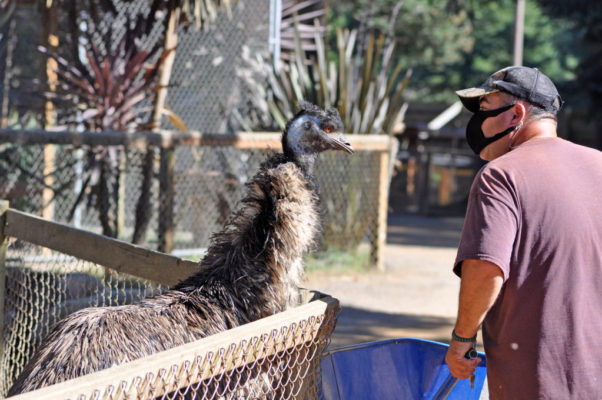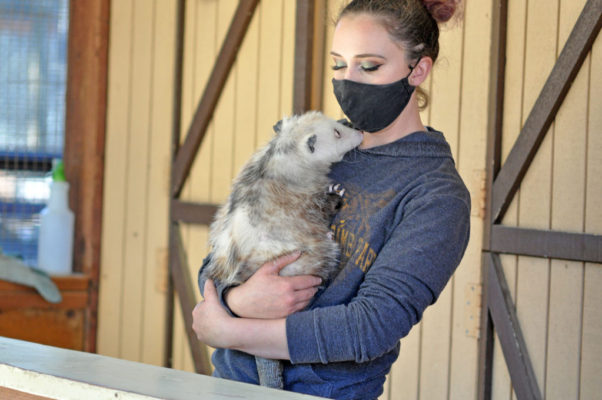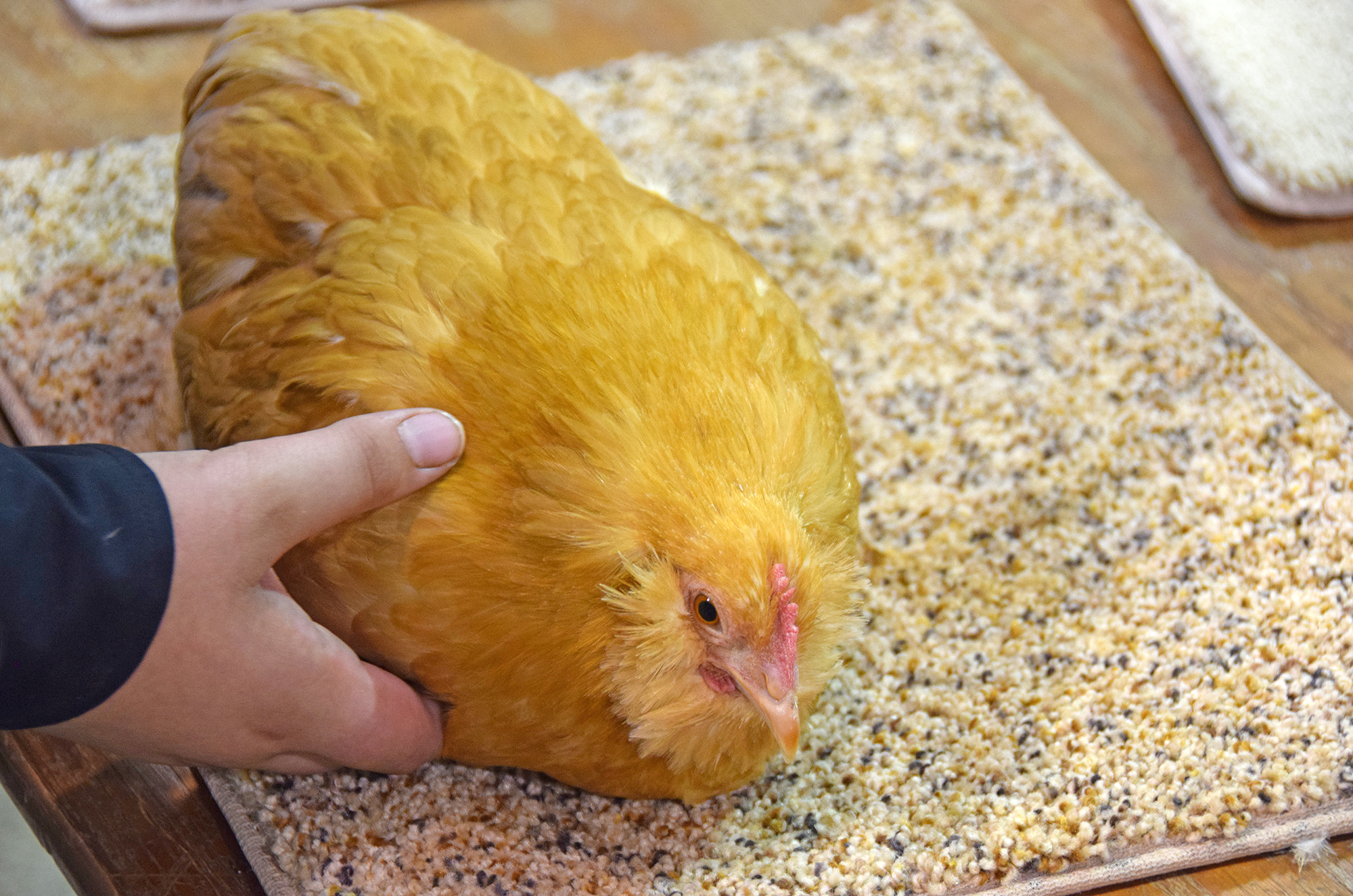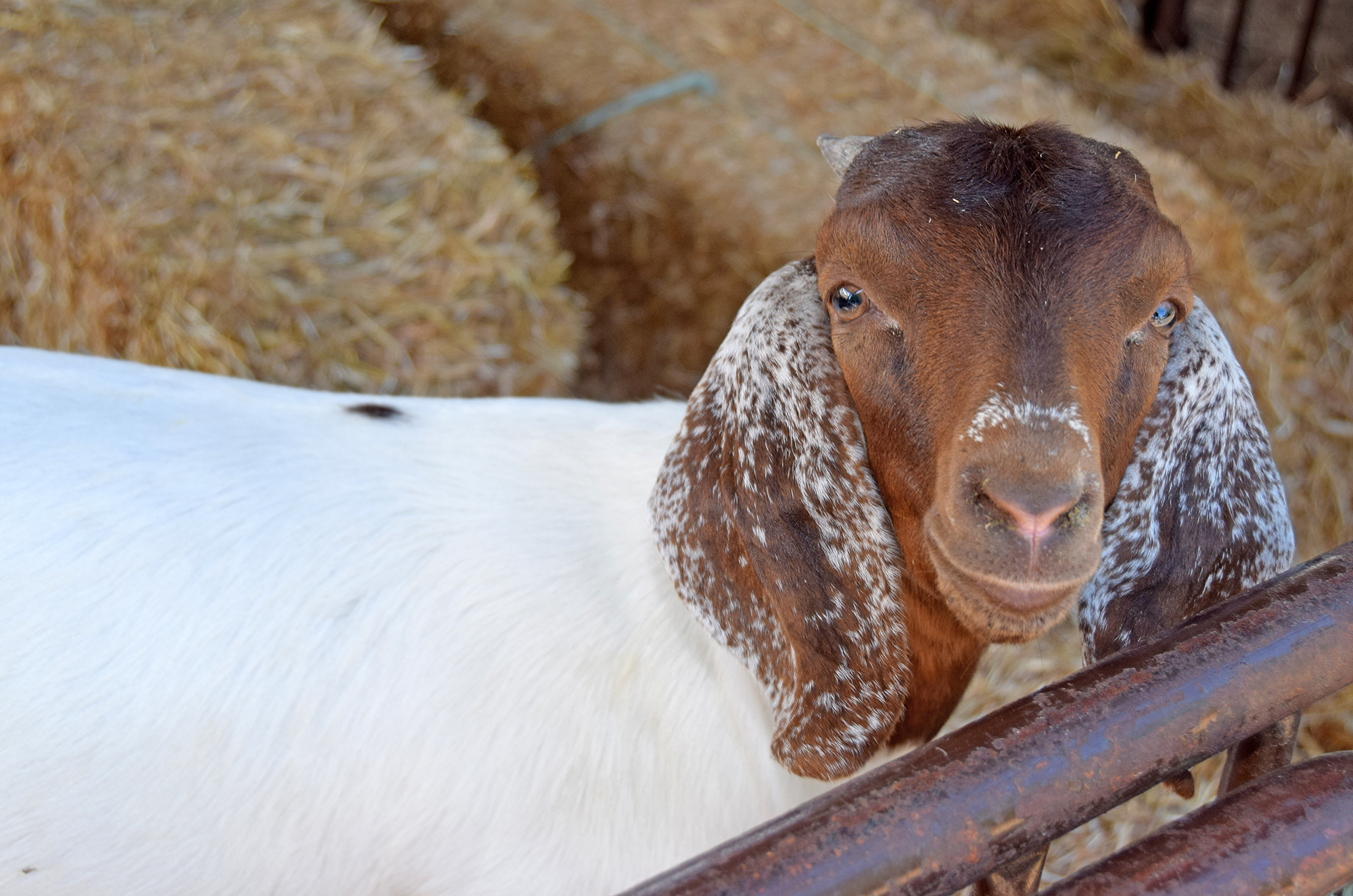
Zoo Raising & Displaying Animals


Zoo Objectives:
- Provide characteristics of zoo experiences, including commonly featured activities, habitats, and species.
- List the key structures and behaviors of species in Family Felidae.
- Describe considerations in developing and maintaining a group of diverse animal species.
When you head to the zoo, what do you expect to see? Where will you want to go first?
Besides the gift shop, zoos are structured to move people quickly and efficiently through exhibits. Places to sit and rest are usually associated with concessions and restrooms. The challenge is to move a large number of people while still providing an engaging (entertaining and educational) experience. Underlying the entire endeavor is the need to earn enough revenue to provide housing, food, and medical care for expensive animals.
This is a map of the Oregon Zoo in Portland. Zoos typically are structured around a series of habitats that organize animals with similar environmental requirements. For example, desert reptiles are usually indoors within a heated building. Herd mammals are typically housed outdoors in large grass enclosures. This zoo has specific habitats that are found in the Pacific Northwest with corresponding animal species.
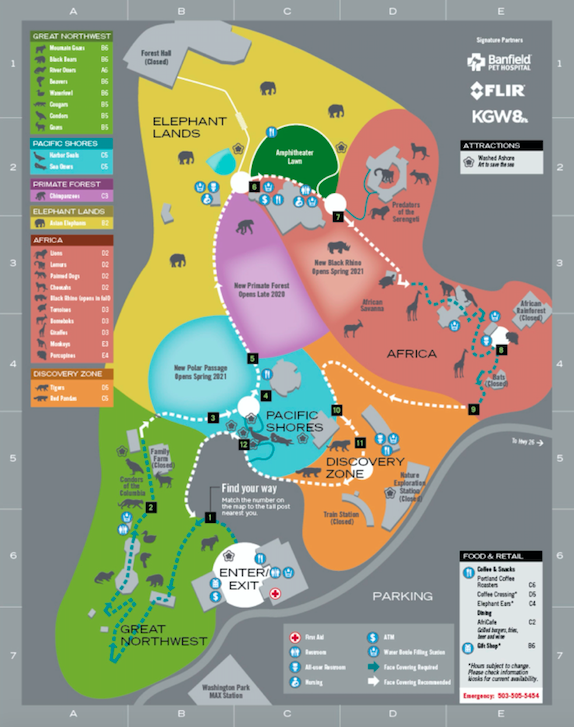
Notice the large area of the map in yellow dedicated to elephants. The zoo has made this commitment in part due to the draw of a successful breeding program. Area has also been set aside for breeding the endangered California Condor and fruit bats. In some cases the breeding programs are critical in fostering an endangered or threatened (close to endangered) species. These exhibits draw people to the zoo and can serve an educational component about species facing extinction.

This is money in the bank! Zoo attendance (and revenue) is impacted by the ability to raise and display healthy animals. The U.S. National Zoo in Washington D.C. is receiving a great deal of media attention due to its recent successful panda birth.
Zoos often struggle with providing adequate habitat for animals. This is particularly challenging for primates that require adequate mental stimulation and an enriched habitat to live a full lifespan. Public feedback is driving zoos to reconsider the way organisms are kept. This is back at the Oregon Zoo. If you ever visited the old primate habitat, you are probably aware that it was small and housed several high-maintenance species. Zoos are attempting to modernize facilities.
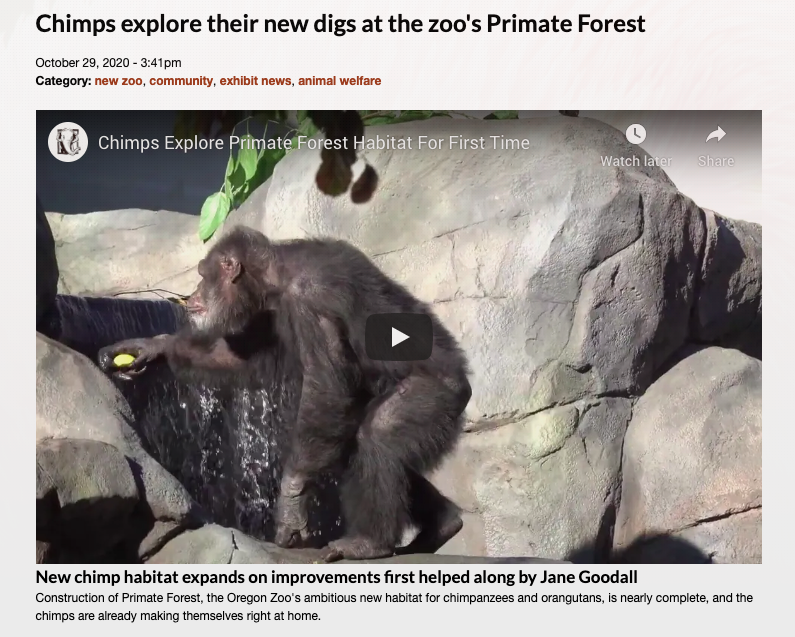

Before you head to a zoo, download the map and look for any special exhibits or events. This is especially important now that zoos are attempting to reduce transmission of SARS-cov-2 to potentially susceptible animals.
Some of the most popular animals at the zoo are the large cats.
All cats, small and large, are classified in Family Felidae with several shared characteristics.
Slender & Muscular
Retractable Claws
Strong Jaws
Camouflage
This tiger has all of the classic cat characteristics: sleek body with camouflage colors and pattern; a powerful jaw and huge claws.
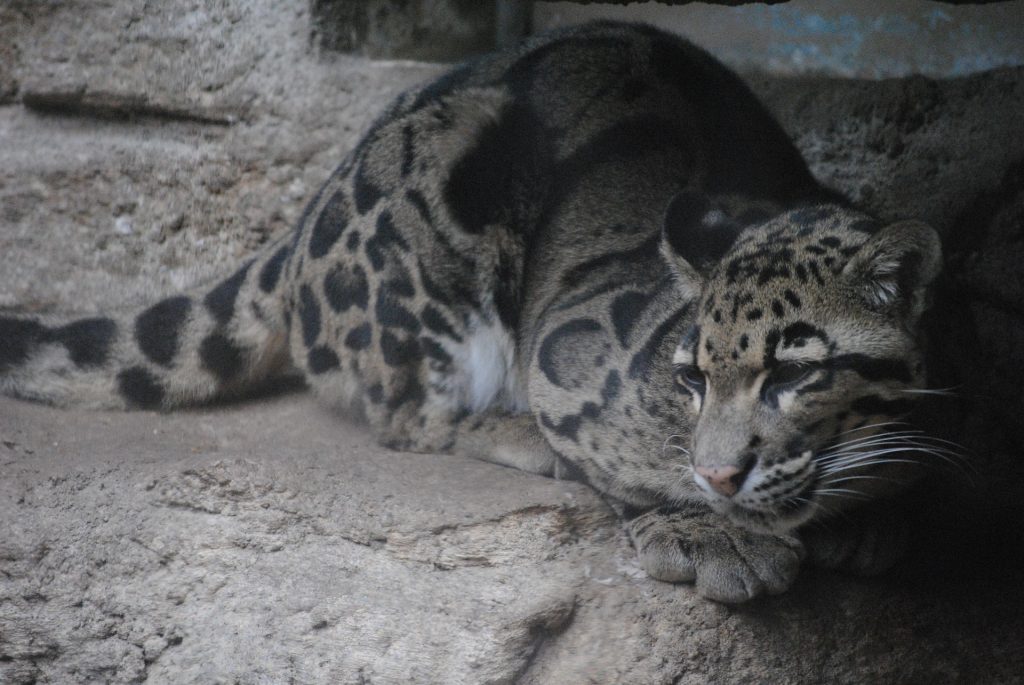
Cats have to eat meat, and often range over large territories to find sufficient food. Increased roadways and decreased habitat size have negatively impacted wild cat populations. However, keeping wild cat species in captivity can be challenging.
If you have seen the Netflix series “Tiger King” that was such a big hit early in the pandemic, you are probably aware of the concerns about keeping the large cats as pets or in small zoos. We traveled to a popular destination on the coast, near Bandon, OR: the West Coast Game Park Safari.

This park is part wildlife safari and part petting zoo. The petting zoo includes free-roaming domesticated animals as well as animals like deer that humans eat. These animals were clean and clearly well-fed.
Visitors can also handle animals commonly kept as pets as well as rehabilitated wild animals like skunks and possums. The ferret is licking Mark’s hand.
Several of the animals clearly had positive interactions with employees and everyone we spoke with seemed engaged and knowledgable.
But the challenges facing the facility were also evident. Lions, tigers, and cheetahs have noticeably smaller enclosures than in large urban-based zoos. There were a small number of paying visitors and these animals require costly meat every day. It is hard to see how these small zoos will survive the pandemic.
The leopards alternated between sleeping and pacing in the direction of the roaming “petting zoo” prey-like animals.
The facility also featured serval cats, a small wild cat species that is being bred with domesticated cats to produce the large Savannah Cat breed (which sell for $1000-$10,000 each, don’t google them!). This young serval is being trained to be friendlier around humans. It may smell our cats on Mark’s pants, because it is making some aggressive moves.
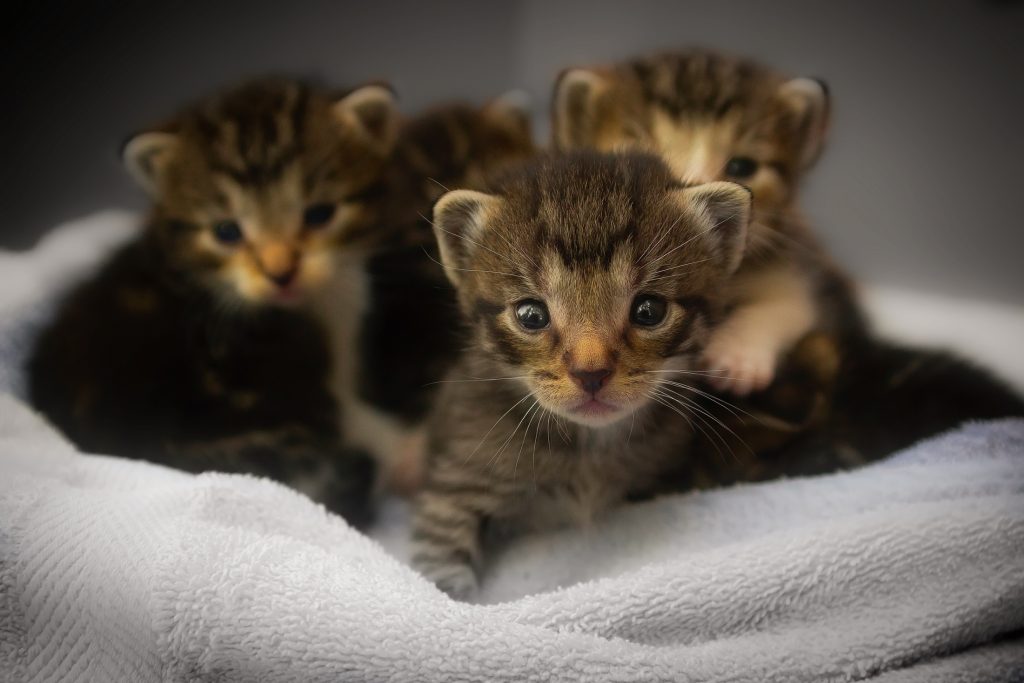
Where do house cats fit in the picture? Domesticated cats have not been bred as house pets for as many generations as dogs. Their primary domestic use has been rodent control, often in secondary structures like barns and sheds. As a result, cats maintain many of their ancestral behaviors.
Our Bengal cats are only a few generations removed from a cross between the wild leopard cat and a domesticated cat. They demonstrate speed and weaponry.
The ancestors of all domesticated cats were small cat species that were preyed upon by larger cat species.
Pet cats can easily startle and hide, their ancestors were not the “top predators” in their food webs and their predator-avoidance behaviors are maintained.
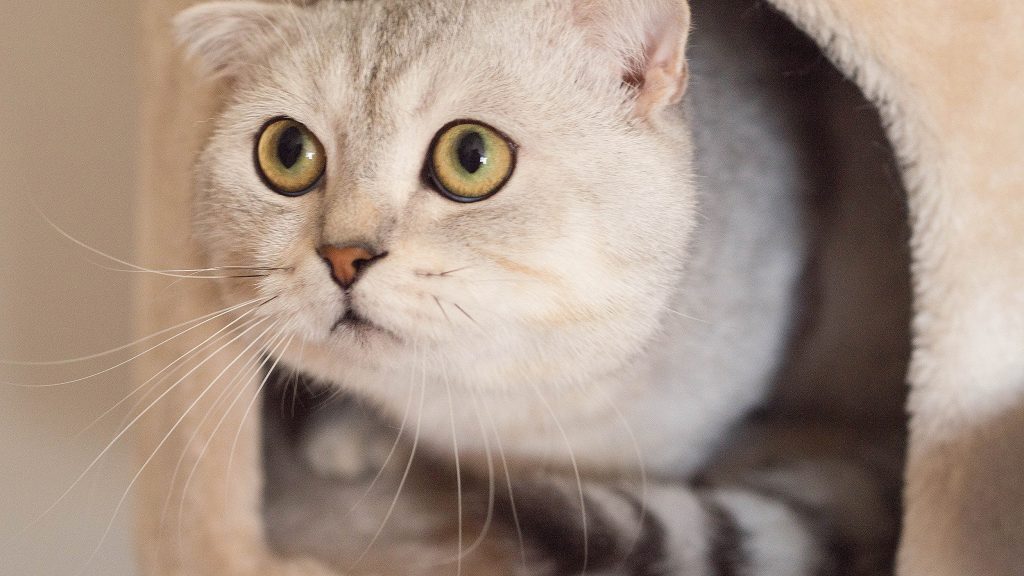
An excellent “zoo-like” experience that may be closer to home is a local agricultural fair. In Oregon we have several county fairs and a state fair. Fairs are an opportunity to view animals and learn more about animal care.
Good husbandry practices including artificial selection for desired traits, are recognized at fairs.

Farm management requires balancing the daily needs of diverse species. We will focus on crops and garden practices in Module 10. Farm animals require feeding, cleaning, breeding, and veterinary care, and all of these can vary animal by animal.
Some of the key lessons from the management of large-scale farming operations can be applied to smaller-scale care of family pets.
Lesson #1: Don’t Exceed Your Limits
This is basically a carrying capacity issue. You only have a set amount of time, space, and money. Acquiring or breeding too many animals can result in limiting care, leading to disease or death of animals. The number of animals you can support can change over time, analogous to changing carrying capacity of a habitat. A new job or relationship will limit time available to manage animal care.


Lesson #2: Keep a Budget
In nature, limited resources like food and water continually threaten survival. Animal care requires resources and these costs need to be budgeted up front. This includes purchase, feeding, change in feeding while breeding, grooming/cleaning, vaccinations, veterinary care, and care of elderly animals. It can also include care while traveling or training costs. A guinea pig that costs $25 at the store may require more than that each month in food and bedding. Overgrown teeth can be fatal and may cost $300+ in veterinary costs and/or regular purchase of chew toys. Research any animal before acquiring to plan and budget expenses.
Lesson #3: Keep a Schedule
In nature animals are also under continual threat from predators and parasites. There are also more subtle threats like deviations in circadian rhythms and stress effects on immune function. Keeping an animal means minimizing threats and one of the key factors is keeping a consistent schedule. This includes feeding, cleaning, grooming, checking for wounds and parasites, exercise, training, and adequate sleeping. It also may mean doing things when the animal needs it, they can have significant less flexibility in their activities. An old adage is that the time you care for an animal may not be the most important time in you day, but it is in theirs.


Lesson #4: Rotate Focus
Animal species have different mating seasons, hair growth, parasite loads, and a myriad of other factors. When managing different species, it is key to set aside blocks of time to focus on a particular group’s needs. An afternoon may be spent grooming dogs on one day and cleaning reptile tanks on the next. Those animals that are being kept in environmental conditions that vary significantly from their original habitats may require more maintenance of equipment like heaters, fans, or lights.
In the next section we head to aviaries; facilitates that display birds.

Check your knowledge. Can you:
- Provide characteristics of zoo experiences, including commonly featured activities, habitats, and species?
- List the key structures and behaviors of species in Family Felidae?
- Describe considerations in developing and maintaining a group of diverse animal species?


